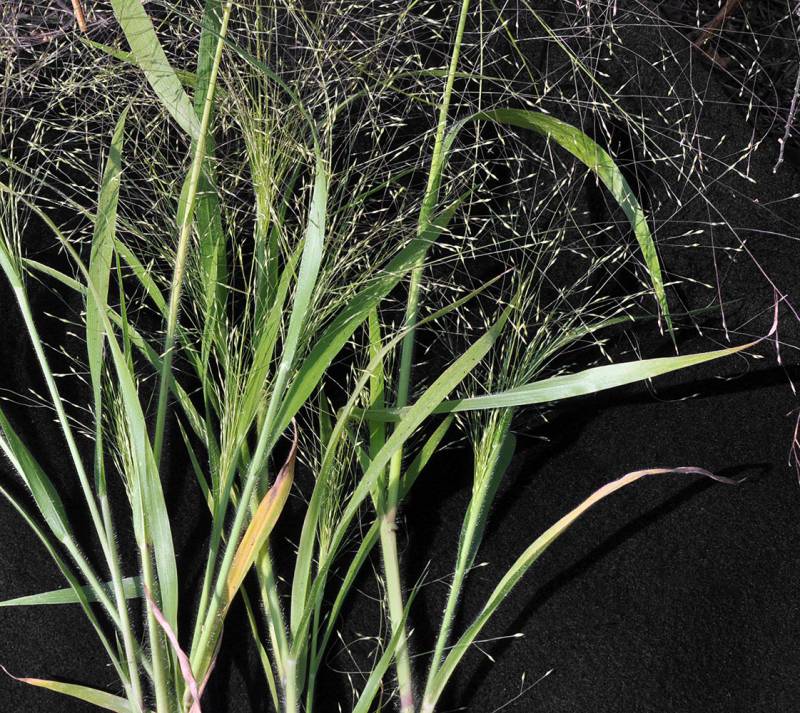Panicum virgatum
Panicum capillare
witchgrass
Sheaths open; articulation below the glumes;
ligules composed of straight hairs 1.5-2 mm. long;
blades 5-12 mm. broad.
Inflorescence a diffusely-branched panicle 1-3 dm. long. often partially included in the uppermost sheath;
spikelets 2-flowered, 2.5-3 mm. long; first glume 3-nerved, half as long and the spikelet; second glume 7-nerved, about as long as the lower lemma, which is sterile and 9-nerved, both well exceeding and enclosing the fertile lemma and palea.
Panicum virgatum
Panicum capillare
Occurring east of the Cascades crest in Washington; occurring in scattered locations near Portland, OR and Boise, ID, otherwise east of the Rocky Mountains in central and eastern North America, where native.
Occurring on both sides of the Cascades crest in Washington; British Columbia to California, east across North America to the Atlantic Coast.
- Local floras:
BC,
CA,
OR,
WA
- Local Web sites:
CalFlora,
CalPhotos,
Flora NW,
PNW Herbaria
WildflowerSearch
iNaturalist (observations)
USDA Plants Database
- LBJ Wildflower Center
- SEINet
- Plants of the World Online
- Encyclopedia of Life
- Wikipedia
- Google Image Search


